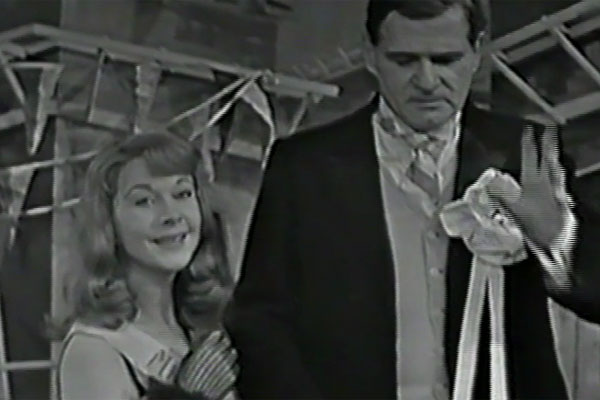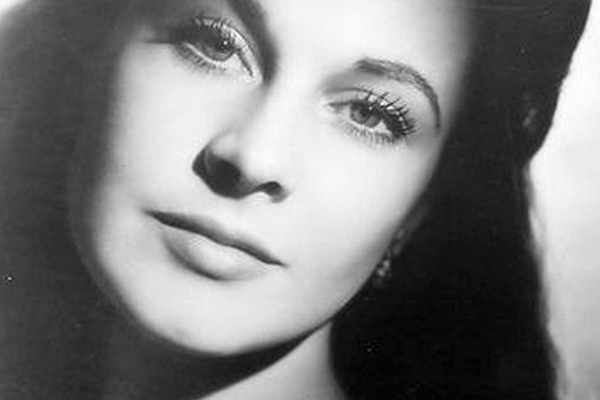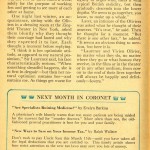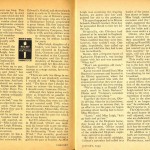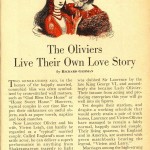Gertrude Hartley photographed in 1958
While helping a good friend sort through some of the vintage magazines in his collection recently, I spotted this unique article in a 1958 issue of the The Tatler & Bystander, a weekly magazine catering mostly to upper-middle class and wealthy British women. It profiles Gertrude Hartley’s Academy of Beauty Culture in Knightsbridge, an institution mentioned several times in Hugo Vickers’ Vivien Leigh biography. This was not the first time the Academy of Beauty Culture had been featured in the media. In 1953, British Pathe recorded newsreel footage of Gertrude and her students at work (those laser treatments look painful). What I find most interesting about this article is the lack of mention of Vivien Leigh (except for the caption relating to the photograph of Suzanne Farrington, below). Perhaps Gertrude wanted readers to know that it was her business and didn’t need or want the endorsement of her famous offspring in order to draw attention to it? What do you think, readers?
****
Making a career of glamour
by Jean Cleland
The Tatler & Bystander, 23 April 1958
A career which is becoming very popular with the young is that of beauty culture, and I find that requests for advice on it are rapidly increasing. My correspondents ask what opportunities it offers, how long the training takes, and what sort of things one has to learn.
To get a reliable and comprehensive answer I went along to see Gertrude Hartley, who has just moved in to a new premises where her already famous “Academy of Beauty Culture” functions under ideal conditions. Since there is more space than formerly, there are more opportunities than ever for students to gain a wide and sound knowledge of this absorbing subject.
“Let us,” I said to Gertrude Hartley, “start at the beginning. Tell me what, in your opinion, are the most important assets for a girl who wishes to take up beauty culture as a career?” The reply was prompt and decisive. “First and foremost she must have sympathy and understanding, and be willing to give a great deal of herself. Many women who come in to have treatments for the first time are shy, and perhaps a little apprehensive. This makes it difficult for them to relax, and that is why the personality of the treatment girl is so important. She need not be glamorous to look at – indeed if she is too beautiful and sophisticated this may tend to be a little ‘off-putting’ – but she must have warmth, and the intrinsic kindness that puts people at their ease. In addition, she must have good hands for massage; strong, yet with a sensitive touch. She must, too have intelligence and the will to learn and to tackle a carried curriculum.” Mrs. Hartley went on, “Beauty culture is a wide subject requiring considerable study, and the mistake some girls make is in thinking that it can be learned without much trouble. They don’t know that to give a good and reliable facial, and a really effective massage, one must understand the principles of anatomy and physiology, and have a knowledge of bone formation and underlying muscles.”
I asked if I could see the school, and we went upstairs to a large airy room, where a number of students were busy writing and doing the theoretical part of their studies. Subjects include anatomy and physiology, already mentioned, correct massage, vitamins and dietetics, for which on certain afternoons a doctor comes to give lectures. The practical side of the course – which lasts five months – takes in both facial and body massage, make-up, ray therapy, and a number of other subjects.
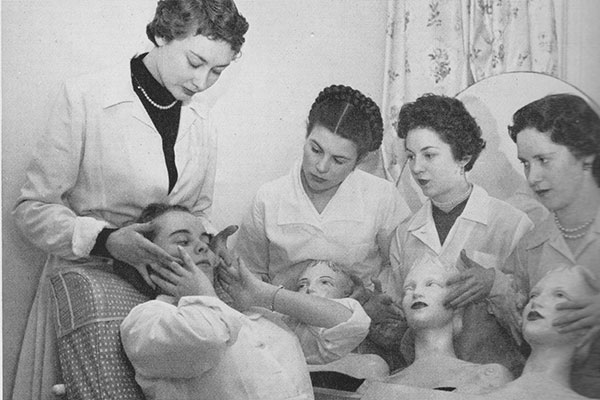
Suzanne Farrington demonstrates massage to students at the Academy of Beauty Culture
To develop the expertness which is essential to facial massage, students practice first on dummies, then on each other. Finally, when they are really good and only lack salon experience, they go to a special treatment room upstairs, where they give facials to clients for half the cost of the ones given downstairs. This is excellent both for the girls and for those people who want a good treatment for a modest price.
As I said goodbye to Mrs. Hartley, I asked one last question. “When the course is finished, what are the prospects?”
“For girls who have taken their training seriously, and done well,” she replied, “there are plenty of opportunities. They can set up on their own, or work for other beauty firms, or even work up a private clientele, going to people’s houses. My greatest pride is the number of girls who have trained in my Academy of Beauty Culture, and are now making a success of their profession, not only in this country, but in other parts of the world.”
♠ ♣ ♠ ♣ ♠






